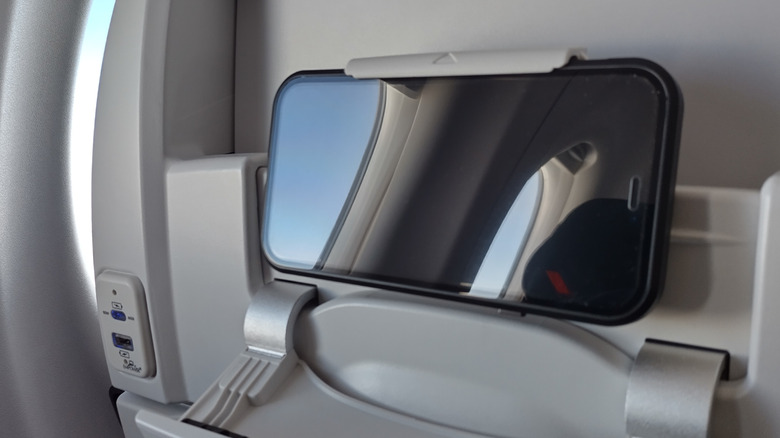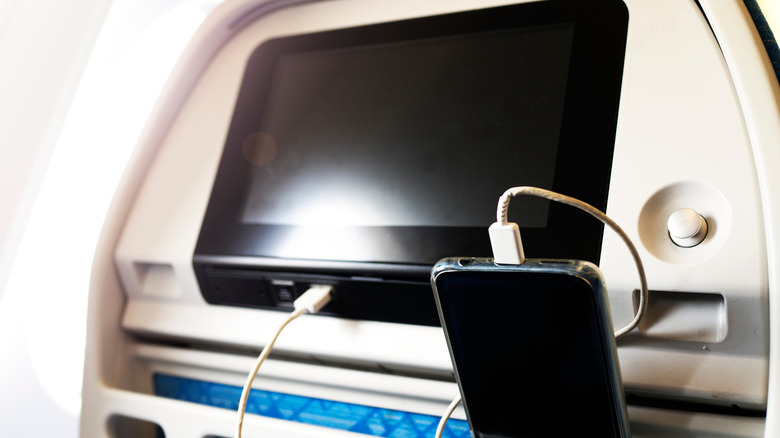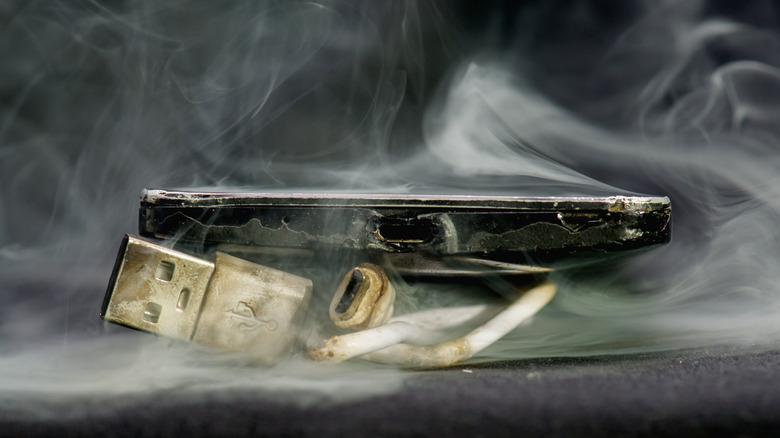Is It Safe To Plug Your Phone Charger Into A Power Outlet On A Plane?
Nowadays, when travelers settle into their seats, they look for a way to keep their phones charged during the flight. Newer aircraft are designed with this convenience in mind, and offer a myriad of USB ports, DC jacks, or even full 110-volt AC outlets. These systems are meticulously designed to deliver stable and controlled current, mimicking that used in most homes. USB ports generally supply about 5 volts at up to 2.4 amps, which is perfectly safe for powering a phone charger, laptop, or similar devices.
The bigger issue isn't the plane's outlet; it's the phone's lithium-ion battery inside. A damaged or defective mobile battery can overheat, leading to smoking or even a fire. That's the reason why airport staff ask if you have lithium batteries inside your check-in luggage. They know the potential risks and want to avoid any unnecessary trouble during the flight. As long as passengers use quality manufacturer-approved chargers and stay within airline policy, charging devices at cruising altitude is both normal and safe.
Most airline power systems are designed with your device in mind
The power systems airlines build into their aircraft are specifically to support passenger electronics. Basic USB ports are often used for short-haul flights and older planes. Newer aircraft and premium cabins add EmPower DC outlets that provide roughly 15 volts up to 75 watts. These were originally created for laptops and typically need a special airline adapter. Many long-haul jets also have a 110-volt AC outlet rated at around 125 watts, so travelers can plug in electronics just like they would at home.
Because these phone charging ports tend to share circuits across several seats, charging can be slow if a lot of passengers are using them at the same time. If you have enough time before the flight, it may be a good idea to charge your device as much as possible, then use the plane's USB ports to top off. It's important to note that cabin crews have the authority to disconnect devices if they're drawing too much power or causing a safety concern. For typical electronic devices, these systems can handle the job just fine.
Battery visibility rules add an extra layer of safety
Airlines take lithium battery safety very seriously, despite aircraft charging being routine. Since 2006, the Federal Aviation Administration (FAA) has logged hundreds of incidents involving battery overheating during flights. A lot of those cases were tied to power banks and e-cigarettes, which is why policies are so strict regarding batteries in carry-ons. Usually, sizes are capped at 100 watt-hours. Updated policies are meant to make identifying trouble even faster. In May 2025, Southwest Airlines started requiring that all charging devices stay visible while plugged in, banning the practice of charging inside bags or seat pockets.
Tougher restrictions have been adopted by several Asian carriers, like Korean Air and Asiana Airlines, banning power bank use during flights altogether. This visibility rule gives crew a clear view to quickly spot swelling or smoke if something goes wrong. For passengers, the best practice is simple: Always use quality chargers, keep devices in plain view, and pay attention to devices that feel unusually hot. With these steps, charging your phone mid-flight is as safe as anywhere on the ground.


